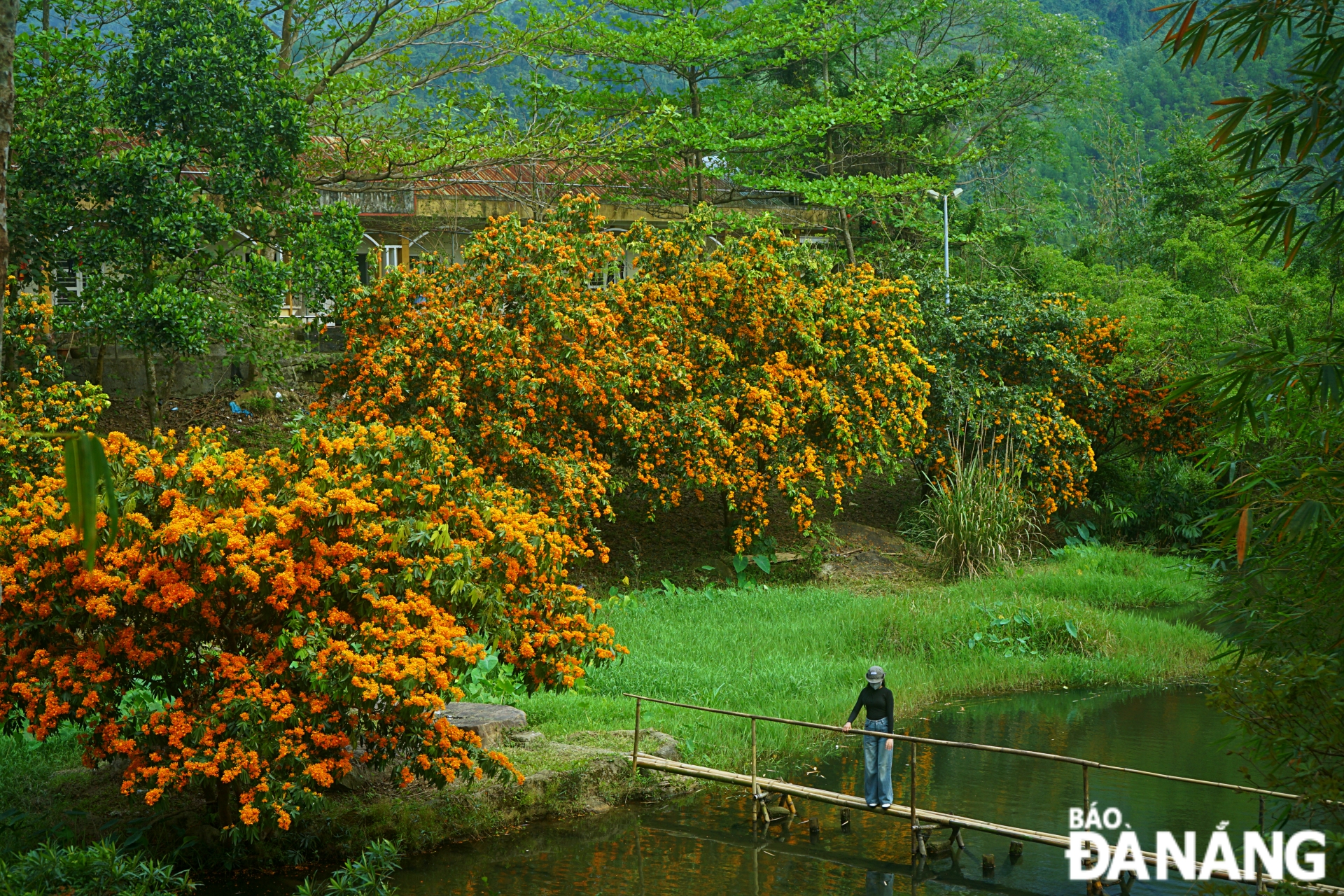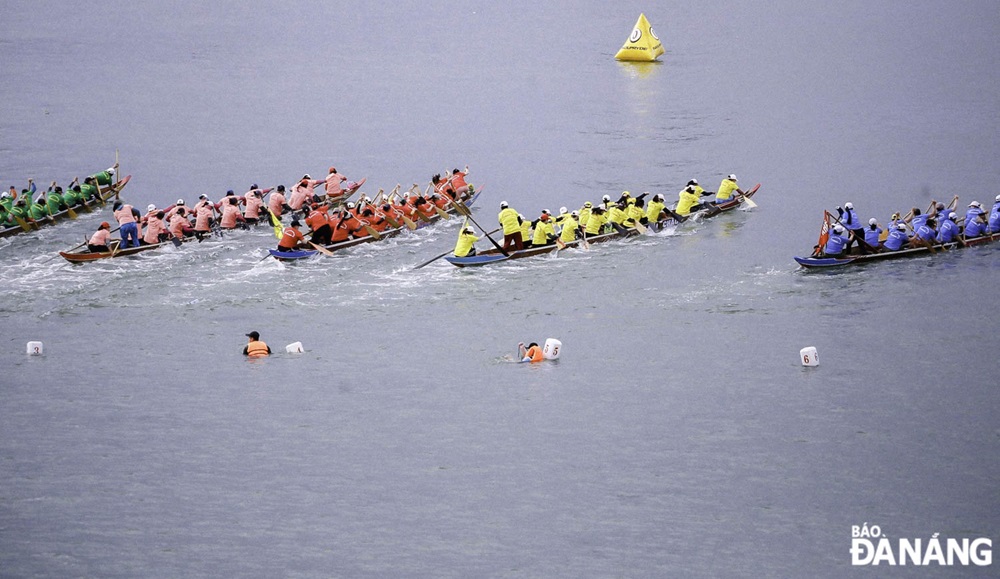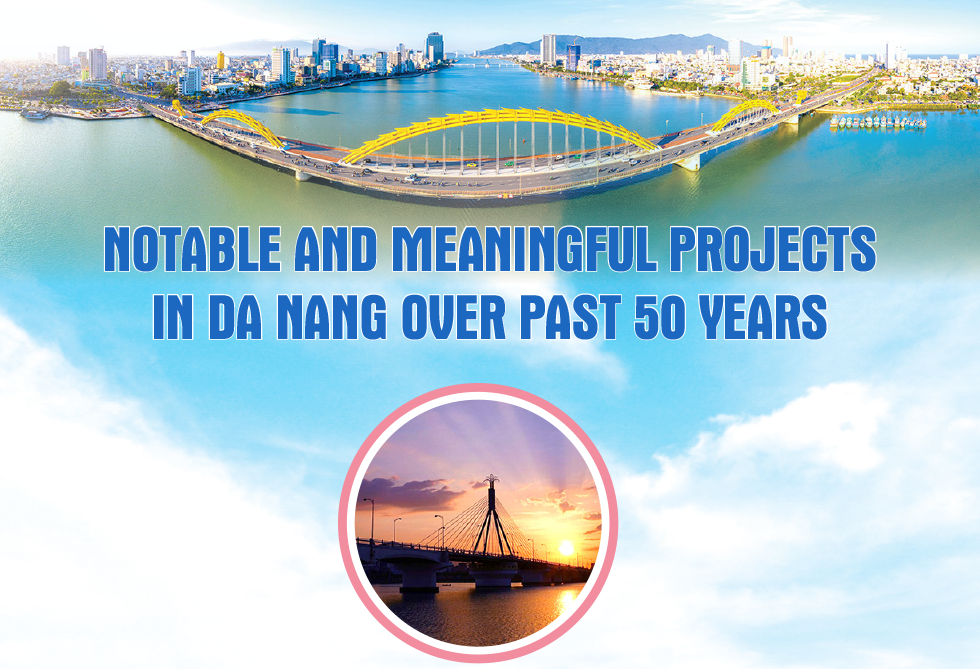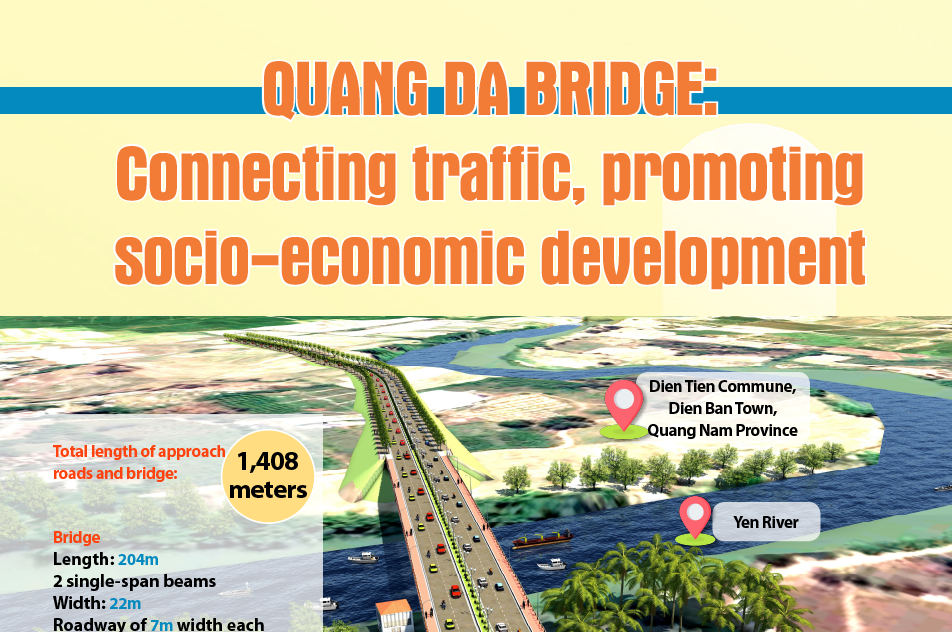Da Nang keen on developing shopping tourism
Like other tourist cities, Da Nang boasts many advantages to become a famous shopping destination. Aside from tourists’ spending on accommodation, transportation, and meals, the city needs to pay more attention to spending on shopping in a bid to increase revenue for the local tourism industry.
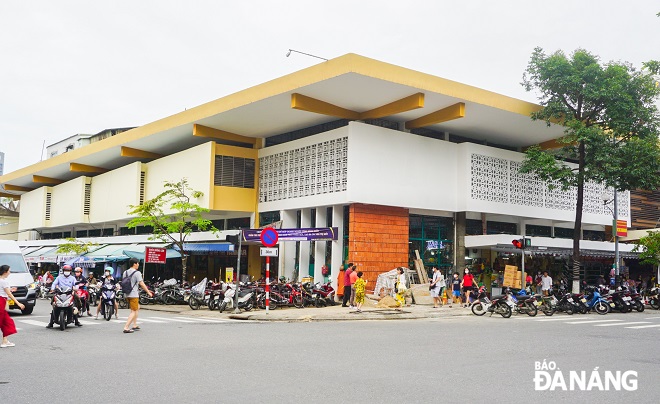 |
| Visitors to the Han Market |
Traditional markets very attractive to visitors
Each region has famous markets that attract much attention from tourists. If Ha Noi is famous for Dong Xuan Market, Hue City for Dong Ba Market, Ho Chi Minh City for Ben Thanh Market, the Con and Han markets are emerged as popular attractions in Da Nang.
Roads around the two markets such as Hung Vuong, Ong Ich Khiem, Tran Phu, Bach Dang and Nguyen Thai Hoc are always busy with shoppers, especially foreigners.
By visiting such traditional markets, both domestic and international visitors have the opportunity to learn about the culture, identity and lifestyle of locals, exchange languages, and experience shopping for local specialties as well.
Since 2017, visitors to the Han Market have a chance to experience the quick ‘ao dai’ tailoring service.
After choosing the favourite ‘ao dai’ fabric, customers will have their body measurements taken by tailors and get consultations about the style of the costume that suits their preferences. Instead of taking a few days, it takes just an hour to tailor an ‘ao dai’. The tailoring cost ranges from VND350,000 - VND500,000 per set of 'ao dai'.
This service has created jobs for more than 100 small traders and tailors at the market.
Many international tourists, especially those from South Korean, are very interested in ‘one-hour ao dai’ products.
Thanks to photos posted by tourists at tourist spots in Da Nang on social networking sites, the Han Market is increasingly known by tourists as a can't-miss place when traveling to Da Nang.
Ms. Deung Chaewon, a tourist from South Korea, said that a lot of local specialties are on sale at the Han market. She liked the busy shopping atmosphere there and loved to wear Vietnamese ‘Ao Dai’ for a walk.
Meanwhile, the Con market is famous for its diverse cuisine with local imprints. Visiting to the market, visitors have the opportunity to enjoy delicious dishes in 3 main areas: indoor cuisine, outdoor cuisine and dry specialties.
The inside food court is divided into two main rows and sells typical dishes. Usually, one row will sell savory dishes such as ‘bun thit nuong’ (vermicelli noodles with grilled pork), ‘bun mam nem’ (rice vermicelli with anchovy fish sauce), ‘banh xeo’ (crispy Vietnamese sizzling pancakes) and ‘banh can’ (little round pancake made of rice flour, eggs and shrimp and served with dipping sauce and herbs). The other row will specialise in sweet dishes such as tea, ice cream, smoothies, and sweet soup.
Especially, dried seafood that is left intact or marinated with extremely eye-catching colours are very attractive to tourists.
Mrs. Dang Thuy Linh from Ha Noi said that every time she came to Da Nang, she always visited the Con Market to buy local specialties as gifts for her friends and relatives.
The most interesting thing is that customers only need to pay for their items, and sellers will free-of-charge pack them carefully for visitors to send on vehicles such as planes, trains or passenger coaches, she added
According to the Management Boards of the Con and Han markets, the markets welcome a daily average of 4,000-5,000 visitors each, and the figure doubles ôn public holidays.
In which, the Han market welcomes many international tourists from South Korea, China, and Thailand, and cruise ship passengers from European countries.
Moreover, other traditional markets like Dong Da Market, and a seafood market in Thanh Khe District, are also attractive to many domestic tourists who come to buy seafood.
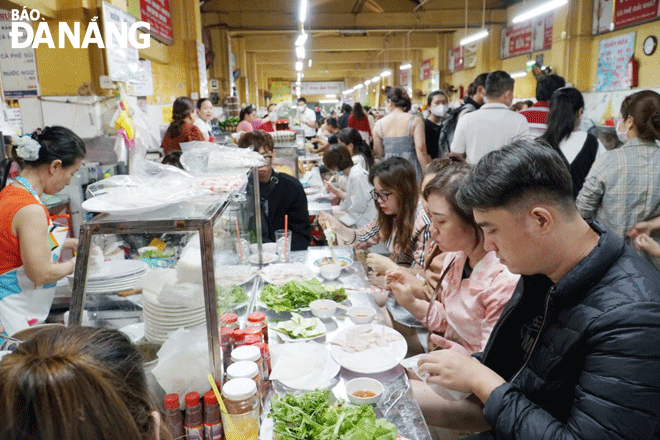 |
| Many traditional markets in Da Nang are very popular with tourists at both home and abroad. IN PHOTO: Visitors are seen trying ‘bun mam nem’ (rice vermicelli with anchovy fish sauce) and ‘Banh trang cuon thit heo’ (boiled belly pork and vegetables wrapped in soft rice paper) at the Han Market. Photo: Q.TRANG |
Urgent need to build brands for Da Nang specialties
The shopping demand of tourists, especially domestic ones, is very high. Apart from visiting popular tourist attractions, travellers still have the need to buy specialties and souvenirs as gifts for their loved ones.
Compared to other localities nationwide, shopping destinations in Da Nang are quite diverse with a system of specialty supermarkets, traditional markets and shops selling typical goods such as feng shui stones, incense, etc.
According to tourism experts, each shopping destination often depends on different sources of visitors.
As a freelance tour guide who is regularly in charge of group tours, Mr. Nguyen Van Tuyen said that domestic tourists often like specialties and consumer goods, so food supermarkets, and wet markets, in Da Nang always meet the needs of customers.
As for foreigners like Thai guests, they often like gifts made from stone.
Previously, tourists were afraid of large stone items because of their weight, but now a number of stone carving establishments in Ngu Hanh Son District have connected with freight carriers to send goods to customers, so products made from stone are popular.
According to Mr. Tuyen, Da Nang lacks of shopping destinations featuring factors of culture, locality and big brands, so it is difficult to stimulate the shopping needs of high spending visitors.
“It is time for Da Nang to build a tourism product with a typical Da Nang brand, so that every tour guide, every driver or every person working in the hospitality sector can proudly introduce to visitors about typical products of their locality", Mr. Tuyen noted.
Chairman of the Da Nang Tourism Association Cao Tri Dung said that the purchasing and spending power of tourists depends on many factors, including typical local products.
In addition to learning about culture, tourists always want to find unique local products. He, therefore, stressed the necessity for the city to make every effort to attract more visitors by local market culture, as well as stimulate their purchasing power by enriching product ecosystems and forming specialised areas for specialties and souvenirs, building brands for some specific products, and deploying communication activities to right customers.
Chairman Dung underlined a must-do for the city to replicate the OCOP model, select typical featured products by consulting experts and the business community, and build brands for these products.
Importance should be attached to effectively deploying communication activities and operating distribution channels; as well as developing other models such as supermarkets, non-tariff shopping malls, duty-free zones, night markets and pedestrian streets in order to increase the purchasing power of tourists in the time to come.
Reporting by T.HA, Q.TRANG - Translating by M.DUNG


